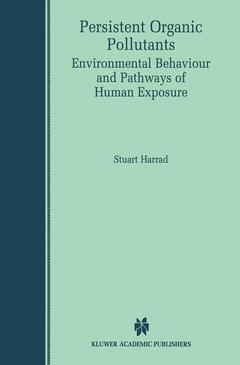Persistent Organic Pollutants, Softcover reprint of the original 1st ed. 2001 Environmental Behaviour and Pathways of Human Exposure
Coordonnateur : Harrad Stuart

Persistent Organic Pollutants focuses on the sources, atmospheric behaviour, terrestrial and aquatic food chain transfer, and human exposure and fate aspects of this important class of chemicals. Other topical issues are addressed, namely: temporal trends in contamination; their transport to polar regions; and the significance of the former Warsaw Pact nations of Central and Eastern Europe as both a global reservoir and source of POPs. Whilst the main focus is on PCDD/Fs, PCBs, and PAH; other organochlorine POPs such as DDT, lindane, and dieldrin are covered.
Persistent Organic Pollutants also provides up-to-date, detailed, and authoritative coverage required by academics, environmental consultants, and policy-makers. Sufficient introductory material is also included to be of relevance to final year undergraduates, Masters and PhD students in Environmental Science/Chemistry.
Date de parution : 10-2012
Ouvrage de 272 p.
15.5x23.5 cm
Disponible chez l'éditeur (délai d'approvisionnement : 15 jours).
Prix indicatif 105,49 €
Ajouter au panierDate de parution : 11-2000
Ouvrage de 272 p.
15.5x23.5 cm
Thèmes de Persistent Organic Pollutants :
Mots-clés :
DDT; Europe; chemistry; environment; environmental science; hazard; transport; air pollution and air quality; ecotoxicology



